Text
Laura Pannack
Mothers milk work in progress collaboration with Thomas Werdinger, John Beaver and Ruth Ivo.
Photographic series of nursing mothers using breast milk in the development of the photographs
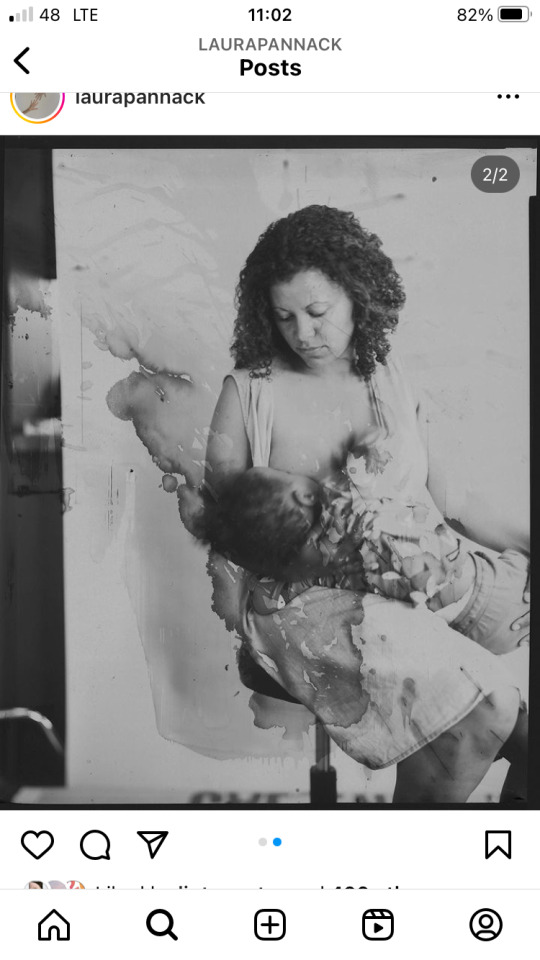

Experimental shoooting onto paper using biochemical techniques for personalised portraits of love.
Capturing emotions by treatment of photopaper before and after exposure.
I used a treatment combination of reactive bio fluids containing horomones enzymes and DNA of the subject and a test suite of molecular light emitting love detection probes
0 notes
Text
Henri Blommers
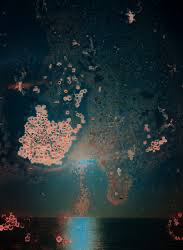
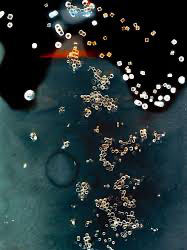
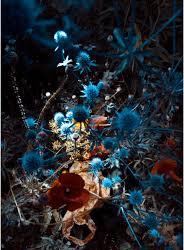
Henri Blommers is an Amsterdam-based fine-art photographer working in general analog, with a variety of cameras and techniques. He creates a refuge out-of-this-world dimension full of bold colors, based on contemporary socially engaged themes like plastics and the impact on our future, and digital influences on our lives, and is co-creator of Hello Gorgeous magazine fighting the stigma around HIV.
In his projects, Henri materializes the images by cooking film in plant material, soaking negatives for weeks in salt, or spraying agricultural chemicals on film.
Nature under threat
During my research, I photographed the places that different stakeholders in forestry, farming, water management, and the local community referred me to. Areas where biodiversity is either increasing or decreasing or where changes in policies have been implemented. For example, leaving the remains of fallen trees, keeping field margins intact, having weeds in between crops, having streams go their own natural way, leave rocks in the fields. In other words, restoring the multitude of biotopes, so uniquely found in Switzerland.
Homo reconnectus
Regeneration is necessary if we want to overcome the climate crisis. We can achieve this by implementing regenerative agriculture (traditional farming without chemicals, artificial fertilizers, and concentrated feed) and reducing cattle so drastically that they are only grazing for nature management and living on residual flows. The reduced methane and nitrate levels will result in soil impoverishment leading to improved biodiversity. We can improve the basis even more drastically by connecting loose pieces of nature, such as forests, meadows, and gardens, enabling plants and animals, now blocked by roads and other human obstacles, to find their species for mating. Also, the concept of ownership needs to change: our garden is not our property. We are only its temporary stewards. Chaos is good, not the controlled black earth stony garden that is the common ideal now. Our human perception that nature starts beyond the fence of our garden needs to change. Education and re-prioritization are fundamental if we are to become part of nature again. To be part of the pyramid and not at the top, a new type of human, Homo Reconnectus.
Analog images developed in water from rivers in agricultural areas and boiled with plant remains of invasive or proliferating species due to climate change. The negatives were then treated with glyphosate, fertilizer, nitrogen, ammonia, and biological pesticide or incorporated into analog or digital collages.


#alternative photography#experimental photography#nature#eco processing#photography#botany#darkroom#cameraless photographic processes#plants
4 notes
·
View notes
Text
i n g a t i l l e r e

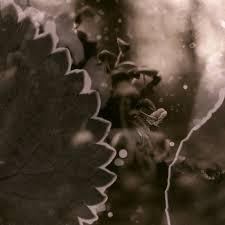

Inga Tillere is a visual artist based in London working with photography, film and alternative photographic processes. Coming from a background in psychology, she brings together her interest in magic and occult with the medium of photography and the significance of nature to mythology, spirituality and healing.
1 note
·
View note
Text
Living Loss exhibition at Glucksmann
Living / Loss, a major exhibition at the Lewis Glucksman Gallery, University College Cork, presents a range of artistic perspectives on illness, from the candid self-portraits of Jo Spence during her cancer treatment, to the tender and compassionate paintings of patients by Cecily Brennan. The show embraces humour with the tongue-in-cheek pharmaceutical packets invented by Damien Hirst, and pathos in the heightened detail of Thomas Struth’s photography for hospital rooms. A site-specific work that deals with public perceptions of illness has been specifically created for the gallery by Irish artists, the Project Twins.
0 notes
Text
Daisuke Yokota
Born in 1983 in Saitama, north of Tokyo, Yokota is part of a generation of young artists using photography in subversive new ways. His approach combines multiple rephotographing and printing, applying acid or flame to the end results, and making one-off prints and books from unexpected materials in staged public performances. Yokota is working out of, and pushing forward, a Japanese tradition of photobook-making that harks back to the visceral experimentation of the Provoke generation and the work of the relentless photobook-maker Daido Moriyama.


“There are no stories in my work. There is only what the viewers find within it for themselves. I am more interested in exploring time and multiple possibilities that exist in reality.”
Yet Yokota also uses multiple layers of re-photographing to obtain happy accidents and thereby assimilate his ideas of how memory is shaped and evolved over time. He explains: “We recollect a single experience from the past again and again, but never in the same way twice. Memories are experienced in relation to the present. As we go through the act of repeatedly recalling our memories, I believe these memories change in relation to what is happening to us now. Although physical experience of time is singular, time at a conscious level can multiply with each recollection of memory and the different experiences of time generated by these actions pass in parallel to a physical time. By recreating those multiplying memories via a series of recollecting actions, I use them as important data that tell me about my current self and my surrounding world.”
1000wordsmag.com
https://www.1000wordsmag.com/daisuke-yokota/

0 notes
Text
Scott McMahon
Scott McMahon grew up in Connecticut and now resides in Columbia, Missouri where he is an Associate Professor of Art at Columbia College. He received his MFA from Massachusetts College of Art & Design in Boston, Massachusetts, and his BFA from The University of the Arts in Philadelphia, Pennsylvania.
Photo Letters (Response Time)
Over the past several years, Ahmed Salvador and Scott McMahon have been collaborating on a project they call 'photo letters', as a way of communicating over their geographically distant situations.
For the project, Ahmed and Scott have been mailing pieces of unexposed film or photographic paper to each other. The packages containing the light sensitive materials were altered in such a way as to let in small amounts of light during transportation. As they receive each package, they develop the results and mail them back to the sender.
The play of light on film and paper usually produces abstract linear patterns and clouds, but at times the results are eerily representational images of glowing landscapes. Simply put, they are an elegy to the fading art of traditional photography, the act of light hitting a light-sensitive material, and to traditional snail-mail correspondences.

Sight [Un]Seen
There is speculation that the last image that passes through the eye when someone dies lingers on the retina for an undetermined amount of time. I find the thought of this possibility profoundly beautiful and poetic.
Many years ago, I came across a photographic image in Pinhole Journal (Volume 4 #1, 1988, Eric Renner & Nancy Spencer) that deeply intrigued me. The image was of a murky landscape taken by the Swedish playwright, novelist, poet, painter and photographer, August Strindberg (1849-1912). The depiction of the landscape wasn’t that remarkable, but the way in which it was created intrigued me the most. For this image, Strindberg used the biconvex lens from the eye of a beetle, in place of a standard camera lens to photographically render the landscape.
Since the camera lens is closely designed after the human eye, it only made sense to experiment with the human lens, as camera lens. In this series I replaced the camera lens with that of the human (cadaver) lens. Essentially, I approached this project as if making a pinhole camera. A box is used and made light-tight; a hole is drilled in one side of the box where the human lens is carefully held in place. Light-sensitive black and white photographic enlarging paper is secured in the box to receive the projected image. Upon chemical development, a photographic negative is produced and in turn, a positive print is made.
Sight [Un]Seen explores images that may have been formed after one departs their physical body. Rather than dwelling upon death this series focuses on the celebration of life. The images are hazy and ethereal, they are forming and dissipating, imprinting the familiar and at times, the unfamiliar. The majority of the series is comprised of portraits. Some of the portraits taken of the donors are made with their own lenses, a literal self-portrait, gathering light and forming a present visage. Additional portraits are made of the living as they peer through the lens of the departed to form their own likeness. Images of landscapes and architectural structures also appear in this series as a way of providing an environment or place one may have frequented.



0 notes
Text
Maria Brett
Marie Brett is an award winning visual artist working across filmic, immersive sculptural installation and more recently live event; she makes work about profound human experiences recurrently involving trauma or social (in)justice.
Recent works include IMMA’s 2021 premier of ‘Yes, But Do You Care? a piece exploring issues of care-giving and Irish capacity legislation; an international global justice commission /large scale installation ‘On the Edge of My Sky’ exhibited at Brussel’s European Parliament; and ‘The Day-Crossing Farm’ commissioned as lead artist for a large-scale immersive installation exploring human trafficking, modern-day-slavery and drug farming with Cork Midsummer Festival, aligned within a ten country European platform.
Brett is considered one of Ireland’s leading exponents of social arts practice and recurrently works cross-disciplinary. The artist graduated from Goldsmiths, London University with both MA and BA degrees. She is the recipient of numerous awards, has artwork held in national and international art collections including IMMA and The Arts Council and has writings published in Ireland, the UK and Finland.
2 notes
·
View notes
Text
Philippine Schaefer
Philippine Schaefer is a german artist born in west germany in 1970. She lives and works in Paris since 1991. Graduated in 1997 at the school of fine arts, Paris (ENSBA), she studied under Christian Boltanski, Marina Abramovic and Mona Hatoum. She is constantly exploring the representation of the humain body through photography, sculpture, performance and tattooing.

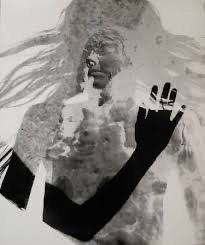

0 notes
Text
‘Reflections on a Radical Plot’, Charlotte Salter-Townshend in conversation with Clodagh Emoe
Imma magazine
Reflections on a Radical Plot offers insights into the journey and multifaceted engagements of Crocosmia × woven together with histories, folklore, and symbolism of Crocosmia and the various species of plants which have presented themselves in the plot on IMMA’s front lawn.
Clodagh Emoe creates works that explore how meaning is formed through our connection with each other and the natural world. Her collaborative project, The Plurality of Existence… (2015-2018) with individuals seeking asylum led organically to Crocosmia ×, a participatory project that was also developed and realised with individuals seeking asylum. Crocosmia × was commissioned by ‘…the lives we live” Grangegorman Public Art and supported by IMMA. The artwork Crocosmia × found a natural home in IMMA, as a plot of wildflowers on the lawn of this stately building.
Studies indicate the value of plants both wild and cultivated on human well-being. Increasingly, researchers acknowledge the importance of daily contact with nature. Even the ‘plucky plants’[i] that find their niche in urban environments have manifold positive effects. Growing on walls, in gutters, between cracks in the pavement, and along railway lines, these wild plants provide much needed refuge and food for animals including pollinators, but they also have a positive effect on human well-being.
Plants referenced in the collection of folklore are brought back to our attention in her organic, ghostlike prints of nettle, forget-me-not, primrose, herb Robert, ribwort plantain, nipplewort, prickly sow thistle, common thistle, opium poppy, wild violet, and western willow herb.
Nettles are nutritious and are an example of food as medicine: “Three doses of nettles in the month of April will prevent any disease for the rest of the year”.[9] Nettles are also vital for wildlife, the leaves providing food for the caterpillars of small tortoiseshell, comma, red admiral, and peacock butterfly. The stinging hairs protect the plant from grazers, allowing all sorts of insect life to thrive undisturbed. Nipplewort is a ‘weed’ of cereal crops. It has become less frequent with modern agricultural practices. The flower buds were thought to resemble nipples. Hence, it was believed to help heal sore nipples. This is an example of a theory known as the doctrine of signatures, popular in medieval times. Willowherb is also known as fireweed, because it grew where bombs had struck during the Blitz in London. It is a plant symbolic of upheaval and survival. Dandelions are considered the classic ‘weed’. Originating in Europe and Asia, it is estimated that dandelions have been in cultivation since the Roman times. They are used as remedies for illnesses including liver problems, gastrointestinal distress, fluid retention, and skin ailments. The plant is also a tasty and highly nutritious vegetable. During the seventeenth century, European colonists introduced dandelions to North America. Native American peoples also developed their own uses of the dandelion after it naturalised.
For the purposes of scientific record, botanists and collectors press and preserve plants as herbarium specimens. Bridging across science and art, botanic artists paint plants with great accuracy and detail. Clodagh develops this further, using unique ecological printing process that captures an image of the subject using the very essence of the plants. What appears as a mirror image reveals the trace of natural dye from the front and back of the plant left on each page, a duality presenting the plants’ dimension and depth, like the poetry of the asylum seekers who collaborated in The Plurality of Existence… and Crocosmia ×. This ecological printing process captures the complexity of these plants, revealing that being is a process in constant flux and in dialogue with the environment. At times, plants are potential, lying dormant in the soil. Later, they decay and return to the earth, showing us that death is just a part of the life cycle. “Deep in their roots all flowers keep the light” – Theodore Roethke.[10]


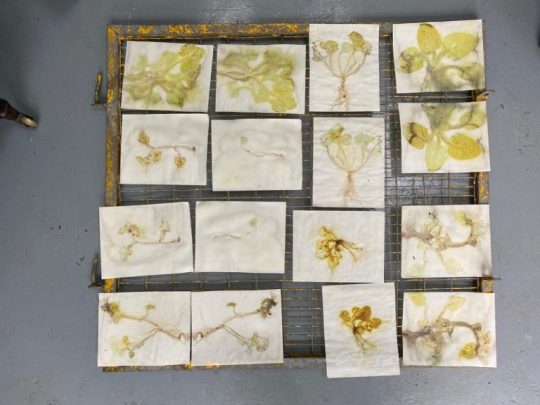
2 notes
·
View notes
Text
Joanna Hopkins
Joanna Hopkins is a multi disciplinary visual artist based in Ireland. She works between video, installation, drawing, collage and sculpture. She explores plants, flowers, folklore and psychology. Recent work and research has been kindly supported by the Arts Council of Ireland Bursary Award 2021, Platform 31 Development Award 2022, and the Meath County Council Arts Office Artists Award 2022.
Sympathetic Soup, 2021
This ongoing body of work explores plants associated with healing in Irish history, drawing on the National Folklore Collection and the writings of Lady Wilde. The installation utilises reclaimed materials from the All Hallows' Campus in Dublin City University as it undergoes renovations.



0 notes
Text
Pepe Atocha
My work is a way of looking through the symbolic manifestations of nature, revealing energy
rather than matter.
In the dark room, I find a physical/mental space where I reveal images that are far from the
the condemnation of the exact description of the tangible; pictures that emerge in the light of play, research, intuition
intuition, collage; capturing shadows instead of matter, allowing us to make visible in
the world of energies that interact with the physical dimension and fantasy.
The photography without camera allows me to have a durable vision of the world, by exempting me from the rules of the progress
digital progress.
Pepe Atocha lives and works in Tarapoto, High Amazonia, Peru.
https://lavolante.art/en/portfolios/pepe-atocha/


The unconscious of medicinal plants series

Rayographs exposed to the fire of a lighter, roots leaves mushrooms
#Pepe atocha#analog photography#alternative photography#rayographs#double exposure#cameraless photographic processes#darkroom
0 notes
Text
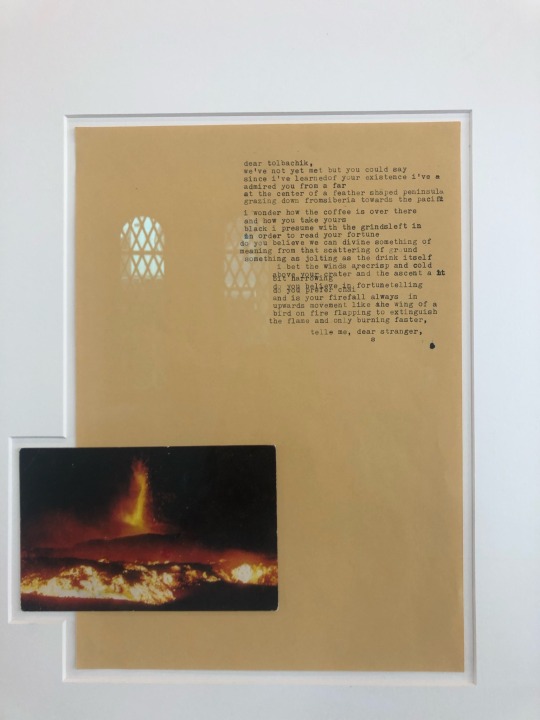
Following Pietra di Luce, and further research into the ideas proposed by Gaston Bachelard’s Earth and Reveries of Repose, The Cave is An Eye is based on the position that it is in the depths of the earth, in the cave, that we see most clearly. The full series contains more than 36 works made through dense layers of stone in the chemical dark room, resulting in unique photographic imprints documenting the absorption of light through geological layers of earth.

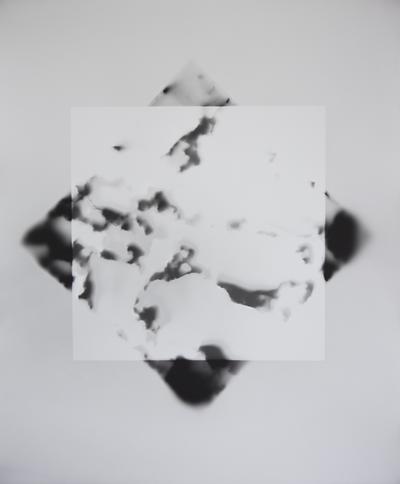
The expressions of distance and closeness and a sense of ritual are most clearly seen in the work of Mirlesse. Postcards to Volcanoes (2020–22) expresses a relationship to the most resonant of natural forces, the eternal entity of the volcano. It is the giver of life – a force so powerful that it created planets – but it also has the power to end life. Its unpredictability is what makes it so mighty, so attractive, so worshipped by many around the world. It literally makes new earth with its ash and lava. During the pandemic, when the world seemed to be falling to pieces and structure fell away from our daily existence,
Mirlesse created her own form of daily ritual by writing intimate
postcards to volcanoes. By doing so, she calls to them each day from inside her home knowing she will never get a reply. The work juxtaposes a postcard of a volcano with a type-written script addressed to it. The personification of the land as illustrated by a postcard (or icon) and the writing is a projection that holds potential far beyond our tangible understanding of images and the supposed clarity of words. Her words, and connection with the volcano make the viewer aware of the precarity of living, and conversely, the vastness of being. Each piece of writing asks questions, talks candidly, and seeks reassurance regarding something greatly more significant than oneself – just as prayers often do.


5 notes
·
View notes
Text
Fanny Béguély is a French visual artist and filmmaker graduated from Le Fresnoy - Studio national des arts contemporains (Tourcoing). Her practice oscillates between cinema, photography and performance. In her work, she attempts to deconstruct the Western dualistic heritage, which has drawn a sterile line between the visible and the invisible, between flesh and spirit, between the human and the other-than-human. Using both fiction and documentary, her films delve into popular knowledge and scientific iconography, bringing together mythical and contemporary times. Her photographic approach is based on a camera-free technique, working with the photosensitive material as a living medium in an attempt to capture the elemental and metamorphic forces of life.



1 note
·
View note
Text
Luciano Salgado
Luciana Salgado (a.k.a. Lucie Salgado; b.1993) is a self-taught artist from Recife, currently residing in Curitiba, Brasil. Salgado's work is marked by introspection and the delicate rendering of her visual compositions, which are heavily inspired by personal realizations of mystical and philosophical nature and oneiric experiences.
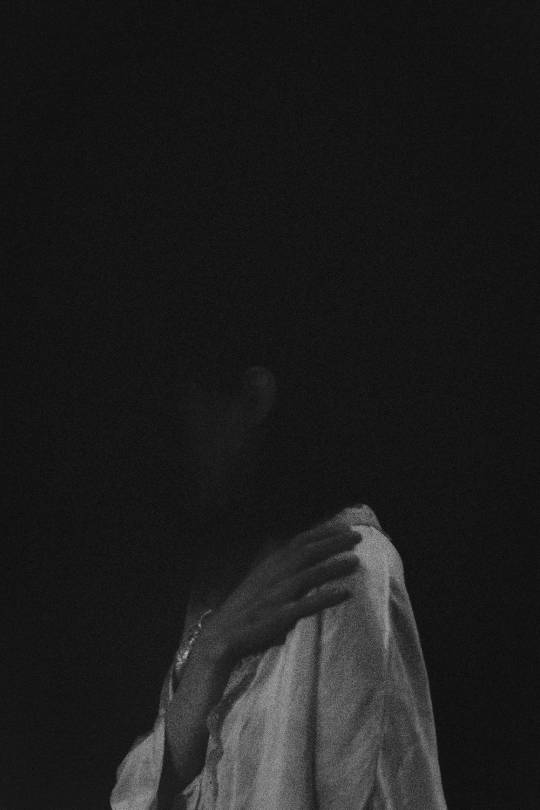
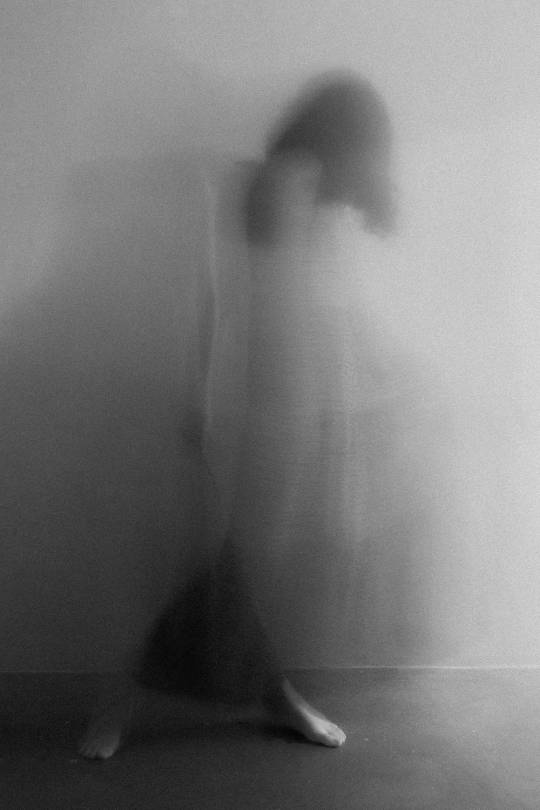

0 notes
Text
The Botanical Mind
Drawing on indigenous traditions from the Amazon rainforest; alternative perspectives on Western scientific rationalism; and new thinking around plant intelligence, philosophy and cultural theory, The Botanical Mind Online investigates the significance of the plant kingdom to human life, consciousness and spirituality across cultures and through time. It positions the plant as both a universal symbol found in almost every civilisation and religion across the globe, and the most fundamental but misunderstood form of life on our planet.
This new online project brings together digital commissions, podcasts, films, texts, images and audio in an expanding archive that will be updated and added to regularly over the coming weeks.
The Botanical Mind: Art, Mysticism and The Cosmic Tree was originally conceived as a trans-generational group exhibition, bringing together surrealist, modernist and contemporary works alongside historical and ethnographic artefacts, textiles and manuscripts spanning more than 500 years. Scheduled to open on Earth Day, April 22, 2020, the exhibition opened on Thursday 24 September 2020. In the meantime we launched this online programme of new artist commissions, podcasts, films, texts, images and audio, expanding on and enriching the ideas and issues informing the show.

Adam Chodzko

Gemma Anderson

F. Percy Smith
6 notes
·
View notes
Text
Aoife Shanahan is a visual artist based in Dublin, Ireland. She received her MFA in Photography from the Belfast School of Art (2018). Her work is driven by a strong interest in camera-less photography. Her experimental approach towards traditional analogue materials allows her to explore their expressive possibilities and to question their contemporary relevance in a digital era. She also holds a degree in Pharmacy from Trinity College, Dublin.




Bio trace
“During lockdown, I started to think about how micro-organisms are all around us and how their activity mostly goes unnoticed. This work is a series of biograms that attempt to visually represent this on-going activity, documenting their presence and making a permanent record of their impact when displaced from their natural environment.”
A piece of film is exposed to a source of bacteria and stored in a dark place for several weeks. The bacteria feed on the film’s silver gelatin emulsion, destabilizing it. As the culture grows, it consumes the gelatin as a food source and liberates the silver particles into abstract patterns. Eventually the bacteria die and no more changes occur. The film visibly altered is scanned, a permanent record of their presence.
2 notes
·
View notes